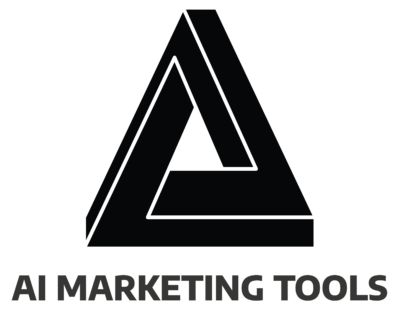

In today’s digital marketing landscape, AI marketing has emerged as a pivotal force, delivering not just insights but actionable foresight.
By integrating predictive analysis techniques into strategic marketing initiatives, businesses can transcend traditional barriers and harness a kind of intelligence that ‘thinks’ before the market does.
It’s about unveiling patterns in data that predict how customers will act, what they will buy, and when they are most likely to make a purchase.
This fusion of technology and marketing prowess aids in discerning the future demands of a target audience, optimizing campaigns, and ultimately enhancing return on investment (ROI).
Keep reading to discover how predictive analytics can be a game-changer for your marketing efforts.
Key Takeaways
- AI Marketing Harnesses Predictive Analysis to Enhance ROI by Aligning Budget Allocation With Consumer Behavior Patterns
- Real-Time Adjustments to Marketing Strategies Informed by AI Insights Improve Customer Engagement and Conversion Rates
- Predictive Analytics Enables Businesses to Anticipate Market Trends, Facilitating Proactive Adjustments to Marketing Tactics
- AI-driven Attribution Modeling Offers a Nuanced Understanding of ROI Across Various Marketing Channels and Touchpoints
- Dynamic Pricing Models Powered by AI Allow Businesses to Adapt Prices in Alignment With Market Demand and Trends
Harnessing AI for Enhanced Marketing ROI

In the intricate landscape of modern marketing, achieving a high return on investment (ROI) stands out as the guiding principle for business strategies. Artificial intelligence (AI) emerges as a valuable ally, enabling marketers to sift through the complexities and pinpoint opportunities that promise the most significant returns.
Integrating predictive analysis techniques into marketing tactics empowers businesses to allocate budgets with precision, optimize marketing channels for peak performance, and measure success with unprecedented accuracy.
Leveraging AI represents a shift from traditional, instinct-based decision-making to a more data-driven approach, ushering in an era of strategic optimization and amplified ROI. In essence, identifying high-ROI opportunities with AI transforms marketing into a more precise, data-informed, and strategically optimized endeavor.
Identifying High-Roi Opportunities With AI
In the realm of marketing, AI acts as a catalyst, harnessing the power of predictive analysis techniques to spotlight high-ROI opportunities. Marketers can now sift through expansive data sets with precision, employing tools like machine learning and complex statistical models to unravel patterns and anticipate customer behavior. This crystal-clear insight enables a shift from scattergun campaigns to focused efforts that resonate with the target audience, significantly enhancing ROI potential.
Streamlining Budget Allocation With Predictive Analysis
Predictive analysis propels marketing budget allocation into the realm of maximum efficiency: By embracing methods such as machine learning and complex statistical models, marketers are gaining the foresight to invest in areas with the highest potential for customer engagement and conversion.
| Marketing Activity | Budget Allocation Before AI | Budget Allocation After AI | ROI Improvement |
|---|---|---|---|
| Social Media Campaigns | $20,000 | $25,000 | 30% |
| Email Marketing | $10,000 | $7,000 | 50% |
| Online Advertising | $15,000 | $22,000 | 25% |
Using AI to Optimize Marketing Channels for ROI
The incorporation of AI into marketing revolves around optimizing channels to maximize return on investment (ROI). Employing tools like sentiment analysis, search engine optimization, and predictive data analysis enables organizations to enhance the effectiveness of their social media marketing, email campaigns, and other strategies, ensuring optimal returns.
real-timeThis analytical approach not only improves the user experience but also guides resource allocation in alignment with evolving consumer behavior, leading to substantial financial gains. In essence, leveraging AI tools in marketing represents a strategic and sophisticated approach to achieving better outcomes and adapting to the dynamic landscape of consumer preferences.
Measuring Marketing Success Accurately With AI Tools
Accurate measurement is the cornerstone of marketing success, and AI tools are revamping this critical function. With technologies such as machine learning algorithms and neural networks, marketing professionals can track and analyze the impact of their campaigns in real time. This allows for timely adjustments to strategies, ensuring marketing efforts are consistently aligned with performance goals and delivering a tangible boost to ROI.
Integrating Predictive Analytics Into Marketing Strategies

IIn the dynamic realm of marketing, the integration of artificial intelligence (AI) has introduced advanced predictive analysis techniques, promising substantial improvements in return on investment (ROI).
By strategically implementing these techniques, businesses can navigate vast amounts of data, extracting valuable insights to refine and revolutionize their marketing strategies. Marketers, following a customized process, can adapt these predictive models to align with specific marketing objectives.
This strategic approach allows for real-time adjustments to campaigns, precise customer targeting, and the establishment of stronger connections with the target audience. The following sections will delve into the transformative potential of predictive analytics across every phase of a marketing endeavor.
Step-by-Step Process for Implementing Predictive Models
To start using predictive models in marketing, first, set up a good system to collect various data on how consumers interact and the trends in the market. After that, analyze the data using methods like regression analysis and machine learning to find useful patterns. Finally, use these insights to create personalized predictive models that can predict market trends, helping fine-tune marketing strategies for better return on investment (ROI).
Customizing Predictive Analytics to Fit Marketing Goals
Marketers use advanced statistical models like the general linear model or machine learning algorithms to refine predictions based on a brand’s unique objectives. By adjusting parameters and ensuring the AI systems learn from the right data sets, businesses gain relevant and actionable insights, driving marketing efforts that resonate deeply with their target audience.
Leveraging Predictive Insights for Campaign Adjustments
Adjusting campaigns with predictive insights forges a path to breakthrough ROI by enabling marketers to pivot strategies in lockstep with dynamic market intelligence. When AI hones in on key performance indicators, the agility of a marketing engine is vastly improved, trimming excess from marketing spend while magnifying successful tactics. This approach allows businesses to respond swiftly to changes in consumer sentiment, ensuring marketing communications remain relevant and impactful.
Bolstering Customer Targeting With Predictive Analysis
Employing predictive analysis in customer targeting is akin to having a compass in the vibrant maze of consumer data: it guides marketing initiatives with precise insights on customer preferences and behaviors. By anticipating the needs and wants of the audience, companies can curate personalized marketing strategies that resonate with individuals, cultivating a climate of loyalty and increasing customer lifetime value.
- Analyze consumer data to understand purchasing habits and preferences.
- Deploy predictive modeling to identify potential high-value customers.
- Develop tailored marketing campaigns to engage these individuals effectively.
- Monitor and adjust strategies in real-time based on predictive analytics feedback.
Such targeted approaches not only elevate the user experience but also streamline marketing resources to where they have maximal impact, thereby enhancing ROI.
Predictive Analysis to Forecast Marketing Trends

As the digital landscape continues to morph and consumer behaviors shift, predictive analysis stands as the beacon of innovation for marketers seeking to stay ahead of the curve.
The integration of AI marketing strategies and predictive analysis techniques offers the foresight required to not just survive but thrive amidst the ebb and flow of market trends.
This section will delve into the utilization of predictive models for analyzing market trends, adapting AI-generated insights to preemptively meet consumer needs, and crafting agile strategies informed by predictive trend data.
Through this lens, marketers are empowered to anticipate shifts with precision, ensuring a strategy that’s not reactive but predictive, ultimately maximizing ROI.
Utilizing Predictive Models for Market Trend Analysis
Predictive models are transforming market trend analysis by providing marketers with sharp projections of future consumer demands and market conditions. By analyzing current and historical data patterns, these models assist in crafting robust marketing strategies that address potential upswings or downturns in specific segments, improving the accuracy of demand forecasting and allowing for proactive strategy adjustments.
Adapting AI Insights to Anticipate Consumer Behavior
Harnessing advanced AI insights empowers businesses to stay one step ahead of consumer behavior, ensuring their marketing efforts are not just reactive but presciently aligned with emerging preferences and needs. Employing tools like sentiment analysis and behavior pattern recognition, these AI-driven strategies enable marketers to glean subtle shifts in consumer interactions, paving the way for strategic, anticipatory action that resonates with audiences and drives sustained engagement.
Crafting Strategy Based on Predictive Trend Data
Shaping an effective marketing strategy hinges on the capacity to anticipate and adapt to emerging trends, leveraging predictive trend data as a strategic compass. By extracting insights from comprehensive analyses of market movements and evolutions, marketers are empowered to construct forward-thinking campaigns designed to connect with the audience in a meaningful way while pre-empting competitors’ moves, ensuring sustained relevance and heightened ROI.
Boosting Customer Lifetime Value With Predictive Analytics

Understanding and enhancing the customer’s lifetime value remains a cornerstone of sustainable growth, and AI marketing now offers a treasure trove of predictive analysis techniques to achieve just that.
These advanced tools enable businesses to predict and respond to customer behaviors, personalize each touchpoint in the customer’s journey, and discover new opportunities for upsells and cross-sells.
By incorporating these AI capabilities into their strategies, companies are not only meeting but consistently exceeding expectations. This fosters enduring relationships that result in significant and long-term boosts to return on investment (ROI).
Predicting Customer Behaviors to Enhance Engagement
Unlocking the secrets of customer behaviors through predictive analytics aids marketers in enhancing customer engagement and tailoring their approaches. By meticulously analyzing past purchase patterns and digital footprints, AI-driven tools predict future behaviors, enabling businesses to preemptively craft experiences and offer that captivate their audience.
| Customer Behavior | Predictive Analysis Insight | Action Taken | Outcome |
|---|---|---|---|
| Repeat Product Purchase | Identified pattern for potential repeat purchase | Targeted email campaign with personalized offers | Increased repeat purchases by 20% |
| High Engagement but Low Conversion | Detected hesitation at checkout | Optimized checkout process and triggered reassurance communications | Conversion rate improved by 15% |
| Seasonal Buying Trends | Forecasted peak seasons for specific products | Launched timely promotions and stock adjustments | Sales uplift of 25% during peak seasons |
Personalizing Customer Journey Through Predictive Insights
Personalization is the key to forging deep and lasting connections with customers, and predictive insights wielded through AI marketing make this incredibly achievable. By analyzing behavior patterns and mapping out the customer’s journey, AI tools help marketers tailor interactions that feel bespoke to each individual, resulting in a smoother and more engaging experience that drives loyalty and value over time.
- Collect behavior data across all customer touchpoints.
- Analyze this data using predictive analytics to determine preferences and needs.
- Create personalized experiences at key decision points within the customer journey.
- Monitor customer responses and refine the personalization for continuous improvement.
Increasing Upsell and Cross-Sell Opportunities With AI
Predictive analytics harnessed through AI marketing offers a significant advantage in recognizing upsell and cross-sell opportunities by scrutinizing purchasing trends and forecasting future buying behavior. Such intelligent analysis equips businesses to present timely and relevant product recommendations, stimulating increased average order value and multiplying revenue streams with targeted precision.
AI-Driven Content Optimization for Higher Conversion Rates

In an age where attention is the new currency, content stands as the critical touchpoint between businesses and their potential customers.
With the integration of AI, marketers can now elevate their content strategies, applying predictive analysis techniques to yield content that not merely informs but actively engages.
This not only sharpens the narrative to suit the preferences of the audience but also optimizes every aspect of content creation to boost conversion rates.
Emerging AI tools are being deployed to create tailored content, rigorously analyze customer responses, and conduct extensive A/B testing, all aimed at refining the marketing message for clarity and impact.
The following discussion unfolds the transformative influence of AI on content optimization and its role in garnering superior marketing results.
Creating Tailored Content With Predictive Content Tools
Predictive content tools are revolutionizing the way marketers curate content, allowing for an advanced level of personalization that reflects the unique needs and interests of their audience. By leveraging predictive analytics, these AI-driven solutions can analyze user interactions, extract insights from past engagements, and generate content topic recommendations that align with the evolving interests of the target market, thus improving the chances of higher conversion rates through compelling and relevant content.
Analyzing Customer Response for Content Refinement
Analyzing customer response is a critical aspect of content refinement that directly impacts conversion rates. AI tools delve into user feedback, delivering insights that guide marketers in tweaking articles, graphics, and calls to action to enhance engagement. The iterative process of evaluation and adjustment, fueled by customer reactions, elevates content to resonate more deeply with the audience.
| Content Feature | Pre-AI Engagement Level | Post-AI Refinement Engagement Level | Impact on Conversion Rate |
|---|---|---|---|
| Blog Headlines | Low Click-Through Rate | Increased Click-Through Rate | 20% Uplift |
| Email Subject Lines | Moderate Open Rate | High Open Rate | 15% Uplift |
| Product Descriptions | Low Time on Page | Increased Time on Page | 25% Uplift |
A/B Testing at Scale With AI for Improved Outcomes
A/B testing reaches new heights of precision and scope with the advent of AI. This allows marketers to conduct extensive comparative analysis at scale, quickly identifying which variations of content, design, or functionality resonate best with users, thus paving the way for enhanced decision-making that leads to improved conversion rates.
Optimizing Pricing Strategies With AI Predictive Techniques

Within the sphere of AI marketing, one of the most astute applications is in sculpting pricing strategies that adapt fluidly to market conditions, effectively maximizing profit margins.
Enlisting AI’s dynamic pricing models, businesses can transcend traditional, static approaches by pivoting prices in real-time, in concert with the pulse of consumer behavior and demand fluctuations.
As companies adopt AI-informed price optimization methodologies, they’re finding that the heart of profitability beats in rhythm with predictive data, leading to responsive pricing strategies that superbly align with both consumer expectations and business goals.
Dynamic Pricing Models Powered by AI
Businesses are transforming their approach to pricing by leveraging AI’s dynamic pricing models, which enable real-time adjustments based on market demand and consumer behavior insights. This application of predictive analytics affords companies the ability to calibrate prices with precision, ensuring competitiveness in the marketplace while safeguarding profit margins.
AI and Price Optimization for Maximum Profit Margins
Engaging ai for price optimization facilitates a keen alignment between consumer expectations and real-time market trends, enabling businesses to pinpoint the sweet spot for pricing. This advanced application of predictive analytics grants firms an edge in profitability, achieving maximized profit margins without sacrificing the appeal of their product offerings.
Real-Time Pricing Adjustments Based on Predictive Data
In the competitive arena of digital retail, implementing real-time pricing adjustments based on predictive data can be a game-changer for businesses looking to thrive. By analyzing a continuous stream of data, AI systems can swiftly adjust prices in response to changes in consumer demand, competitor actions, and market trends, securing an optimal pricing strategy that maximizes both sales volume and profit margins.
Leveraging AI for Competitor Analysis and Market Positioning

In the digital age where competition intensifies by the moment, leveraging Artificial Intelligence (AI) for market analysis and brand positioning has become crucial for businesses desiring to gain a significant edge.
Utilizing AI to dissect extensive market data helps gain insights into competitors’ strategies and performance.
Companies that employ predictive competitive intelligence tools can navigate complex market landscapes with confidence and dexterity, making well-informed strategic decisions.
These decisions, supported by AI benchmarks and real-time data analyses, empower businesses to refine their positioning and adjust tactics swiftly, seizing a competitive advantage that translates into a robust ROI.
Predictive Competitive Intelligence to Inform Strategy
Embracing predictive competitive intelligence, companies gain the foresight to envision the future moves of their adversaries. This strategic leverage, when paired with AI’s advanced data analysis, provides a foundation for market strategies that are both insightful and agile. Organizations can apply these insights to shape their market positioning with a clear understanding of their competitive advantage, ultimately boosting their ROI.
AI Tools for Benchmarking and Positioning
AI tools are redefining the benchmarks for corporate success, enabling precise market positioning with their advanced analysis capabilities. These tools sift through vast data lakes to provide clarity on where a brand stands compared to its competitors, fostering informed decisions on positioning and value proposition refinements that more closely resonate with consumer demand and behavior.
Adjusting Tactics in Real-Time for Competitive Advantage
In a marketplace where agility can set a business apart, AI’s role in providing real-time competitive intelligence proves indispensable. By analyzing market data streams and competitor activity with AI tools, companies can pivot their tactics swiftly, maintaining a strategic edge that can significantly enhance ROI. This dynamic marketing approach ensures that decision-makers have the critical information needed to respond to competitive moves with informed, agile strategies.
Enhancing Attribution Modelling With AI for Precise ROI Tracking

In the pursuit of optimizing return on investment, the application of Artificial Intelligence (AI) in attribution modeling is revolutionizing the way marketers track and attribute value across diverse consumer touchpoints.
As marketers aim for greater accountability and precision in their strategies, advanced attribution methods enhanced by AI and predictive analysis become pivotal.
These techniques help to dissect and understand the complex customer journey, delivering granular insights that enable marketers to measure ROI with an unprecedented level of accuracy.
Crafting a more refined marketing mix based on AI’s sharp insights, businesses can now pinpoint exactly which parts of their strategy fuel success and which need rethinking, paving the way for data-driven decisions that propel growth and profitability.
Advanced Attribution Methods Using Predictive Analysis
Adopting predictive analysis in attribution modeling equips marketers with refined insights, identifying the actual contributions of various channels to the overall ROI. This approach leverages AI’s prowess in analyzing complex consumer pathways, enabling a clearer assessment of where investments are yielding results and where adjustments are necessary for a more efficient marketing spend.
AI-Enhanced ROI Measurement Across Multiple Touchpoints
In today’s multifaceted digital ecosystem, AI-enhanced ROI measurement emerges as the linchpin for understanding the true efficacy of marketing efforts across multiple touchpoints. Implementing AI and machine learning technologies enables marketers to parse through troves of data from various channels, deriving insights that translate to a more precise attribution of revenue to specific customer interactions:
| Marketing Channel | Touchpoint Interaction | Attributed Sales Increase |
|---|---|---|
| Social Media | Engagement with targeted ad | 15% |
| Email Marketing | Click-through on personalized offer | 25% |
| Online Shopping Platform | User reviews and ratings | 20% |
Refining Marketing Mix Based on AI-Generated Insights
Refining the marketing mix with AI-generated insights establishes a potent synergy between diverse marketing channels, optimizing the utilization and impact of each. The embedded AI systems analyze multichannel performance data, uncover latent connections, and reveal which channels drive value and which underperform, thereby informing a strategic recalibration of marketing resources to amplify ROI.
- Deploy AI analysis to extract performance metrics across all channels.
- Identify underperforming areas and redirect resources to high-impact channels.
- Iterate and optimize the marketing mix for continuous improvement and ROI maximization.
Conclusion
Leveraging AI and predictive analysis techniques in marketing strategies proves indispensable for businesses seeking to maximize ROI.
AI tools refine budget allocation, spotlight high-ROI opportunities, and optimize marketing channels, ensuring resources target the most lucrative areas.
Predictive models facilitate a deeper understanding of customer behavior, improving engagement and personalizing the customer journey for increased lifetime value.
Furthermore, AI-driven content optimization and dynamic pricing enhance conversion rates and profit margins.
Employing AI for competitive analysis enables swift tactical adjustments for sustained market advantage.
Advanced attribution methods powered by AI provide precise ROI tracking, allowing for data-driven decision-making and ongoing optimization of the marketing mix.
In essence, integrating AI and predictive analysis into marketing guarantees a competitive edge, transforming vast data sets into actionable insights that drive substantial and measurable financial success.

Comments